- Home
- Ian Buruma
Inventing Japan: 1853-1964 (Modern Library Chronicles)
Inventing Japan: 1853-1964 (Modern Library Chronicles) Read online
Modern Library Chronicles
KAREN ARMSTRONG on Islam
DAVID BERLINSKI on mathematics
RICHARD BESSEL on Nazi Germany
ALAN BRINKLEY on the Great Depression
PATRICK COLLINSON on the Reformation
JAMES DAVIDSON on the Golden Age of Athens
SEAMUS DEANE on the Irish
FELIPE FERNÁNDEZ-ARMESTO on the Americas
LAWRENCE M. FRIEDMAN on law in America
PAUL FUSSELL on World War II in Europe
JEFFREY GARTEN on Globalization
MARTIN GILBERT on the Long War, 1914–1945
PETER GREEN on the Hellenistic Age
JAN T. GROSS on the fall of Communism
ALISTAIR HORNE on the age of Napoleon
PAUL JOHNSON on the Renaissance
TONY JUDT on the Cold War
FRANK KERMODE on the age of Shakespeare
JOEL KOTKIN on the city
HANS KÜNG on the Catholic Church
EDWARD J. LARSON on the theory of evolution
BERNARD LEWIS on the Holy Land
FREDRIK LOGEVALL on the Vietnam War
MARK MAZOWER on the Balkans
JOHN MICKLETHWAIT AND ADRIAN WOOLDRIDGE on the company
ROBERT MIDDLEKAUFF on the Gilded Age
PANKAJ MISHRA on the rise of modern India
ANTHONY PAGDEN on peoples and empires
RICHARD PIPES on Communism
COLIN RENFREW on prehistory
JOHN RUSSELL on the museum
CHRISTINE STANSELL on feminism
KEVIN STARR on California
ALEXANDER STILLE on fascist Italy
CATHARINE R. STIMPSON on the university
NORMAN STONE on World War I
MICHAEL STÜRMER on the German Empire
STEVEN WEINBERG on science
A. N. WILSON on London
ROBERT S. WISTRICH on the Holocaust
GORDON S. WOOD on the American Revolution
JAMES WOOD on the novel
2003 Modern Library Edition
Copyright © 2003 by Ian Buruma
All rights reserved under International and Pan-American Copyright Conventions. Published in the United States by Modern Library, a division of Random House, Inc., New York, and simultaneously in Canada by Random House of Canada Limited, Toronto.
MODERN LIBRARY and the TORCHBEARER Design are registered trademarks of Random House, Inc.
Published in Great Britain by Weidenfeld & Nicolson, a division of Orion Publishing Group Ltd.
LIBRARY OF CONGRESS CATALOGING-IN-PUBLICATION DATA
Buruma, Ian.
Inventing Japan, 1853–1964 / Ian Buruma.
p. cm. — (Modern Library chronicles; 11)
“A Modern Library chronicles book.”
eISBN: 978-1-58836-282-7
1. Japan—History—1868– 2. Japan—History—Restoration,
1853–1870. I. Title. II. Series.
DS881.9.B87 2003
952.03—dc21
2002026346
Modern Library website address: www.modernlibrary.com
v3.1
CONTENTS
Cover
Other Books by This Author
Title Page
Copyright
Prologue: The Tokyo Olympics
1. THE BLACK SHIPS
2. CIVILIZATION AND ENLIGHTENMENT
3. ERO GURO NANSENSU
4. AH, OUR MANCHURIA
5. WAR AGAINST THE WEST
6. TOKYO BOOGIE-WOOGIE
7. 1955 AND ALL THAT
Epilogue: The End of the Postwar
Glossary
Bibliography
About the Author
PROLOGUE: THE TOKYO OLYMPICS
In 1964, Japan rejoined the world. The postwar period of poverty, humiliation, and, until 1952, Allied occupation was finally over, and the boom years of the economic miracle had begun. In a formal, political sense, Japan had already rejoined the world as a sovereign nation in September 1951, when Prime Minister Yoshida Shigeru signed the San Francisco Peace Treaty with his country’s former enemies, though not yet with China or the Soviet Union. But the autumn of 1964, when the Olympics came to Tokyo, was to be the great ceremonial celebration of Japan’s peaceful, postwar democratic revival. No longer a defeated nation in disgrace, Japan was respectable now. After years of feverish construction, of highways and stadiums, hotels, sewers, overhead railways, and subway lines, Tokyo was ready to receive the world with a grand display of love, peace, and sports.
To anyone sitting in Tange Kenzo’s grand new stadium on the afternoon of October 10, seeing the athletes from ninety-four nations marching by, Americans in cowboy hats and Japanese in red blazers, with Emperor Hirohito offering a friendly wave to the world from his royal box and eight thousand white doves of peace fluttering toward the bright blue sky, it must have seemed an awfully long time ago that Japan walked out of the League of Nations in 1933 and joined the Axis powers in 1940, hoping to divide the world with Hitler and Mussolini. Manchuria, Nanking, Pearl Harbor, Bataan, Okinawa, and Manila—all that appeared to be forgotten now, as millions of Japanese expressed their joyful feelings in little poems published in the papers every day. One good citizen expressed his emotions like this:
One and then another, ninety-four flags.
Some, perhaps, have met on battlefields.
The poem is less notable for its literary quality than for the odd use of the word perhaps. But as Edward Seidensticker, from whose book I quote, put it, this might be taken “as a mark of the Japanese tendency to soften things a bit.”
By 1964, the chief Japanese symbol of wartime suffering, and subsequently of Japanese pacifism, was the bombing of Hiroshima. As a reminder of Japan’s peaceful intentions, and perhaps also, in a fit of self-pity, of Japan’s own suffering in the past, the young man chosen to light the Olympic flame was born in Hiroshima on the day it was obliterated by the A-bomb. As the flame was lit, fighter jets of the Japanese Self-Defense Forces scrambled over Tokyo with the entirely pacific intent of drawing the five Olympic rings in the sky.
The Japanese impressed the world with their friendly manners and efficient organization. Nothing was allowed to go wrong. And they managed to win plenty of medals, too: sixteen gold, a tally bettered only by the United States and the Soviet Union. Japanese took their sporting records seriously, perhaps more so than was entirely necessary. Two Japanese athletes who failed to come up to popular expectations, a marathon runner named Tsubuya Kokichi and a woman hurdler named Yoda Ikuko, later committed suicide. Poor Tsubuya had the peculiarly humiliating experience of entering the stadium in second place, only to be passed in sight of a horrified home crowd by an Englishman just before the finish. His bronze medal was no consolation.
To the Japanese, always acutely conscious of their ranking among nations, sporting victories were one way to soothe memories of wartime defeat. Through the 1950s, the successes in the wrestling ring of a bruiser named Riki Dozan had served as a balm for injured Japanese pride. His fights tended to follow a well-rehearsed pattern. Faced by larger opponents, often of Western origin, who fought dirty, Riki would falter in the early rounds. But then, gradually, inspired by visions of Mount Fuji, the Japanese hero would work himself into a righteous rage and finally, despite his inferior size, overcome the big, blond villain.
There were, however, a few problems with Riki Dozan. For one thing, he was of Korean origin, an official secret that deceived many but not all. And professional wrestling, though entertaining, lacked the cachet of more traditional forms of combat, such as sumo, kendo, or judo. Besi
des, Riki Dozan was no longer around in the Olympic year. He had been stabbed to death the year before, by a gangster in a Tokyo nightclub. It was time for Japanese to show their prowess in a more traditional manner. So the Japanese Olympic Committee exercised its privilege to choose judo as a new Olympic sport.
Besides the fact that Japanese were likely to win medals in their native sport, judo had another advantage: It would demonstrate the power of skill over brawn. Judo was not about size or muscle power, it was about something infinitely more subtle than that, something almost spiritual. To beat an opponent you needed patience, quickness of mind, and great discipline. A small man could beat a much larger one by using his opponent’s bulk against him. Unlike wrestling or boxing, judo demanded mental skills that might well be beyond the power of Westerners, who were used to cruder forms of combat. Put another way, judo would show off the superiority of Japanese culture, of the Japanese spirit.
To make their point, the Japanese included an open division as well as the traditional heavy-, middle-, and lightweight divisions. Any challenger could enter, no matter how large or small. The Japanese favorite to win gold in this category was Kaminaga Akio, a skilled champion who was hefty for a Japanese, but not as big as the Dutch champion, Anton Geesink, a six-foot-six-inch, 267-pound giant. But no matter, Kaminaga would surely beat him. And this would be worth at least a hundred Riki Dozan wins against blond lowlifes on the pro wrestling circuit.
The bout was set on October 23, the last day of the games. Seventeen thousand people crowded into the martial arts hall in the center of Tokyo to see Kaminaga put the crown on Japan’s Olympic Games. In every Japanese city, town, and village, people gathered around shop windows to follow the event on TV. This was something nobody wanted to miss. Millions came out to support Kaminaga, on whose broad shoulders Japanese pride now rested. There would be no parliamentary business that day. Patriotic bosses made sure their companies had at least one television set on each floor. People sent verses in praise of Kaminaga to the newspapers. The emperor himself would be watching, too.
For ten minutes, the Japanese and the Dutchman were evenly matched. Kaminaga attacked, Geesink fended him off. Both men watched each other’s feet, trying to anticipate the next move, as though they were playing a kind of physical chess game. Then, suddenly, Geesink pounced. With surprising quickness for such a big man, he wrestled Kaminaga to the mat and pinned him down. The Japanese champion thrashed about, trying to get a grip with his hands. His strong calves hit the mat again and again, like a fish struggling for its life. Finally, the referee called time. Geesink had won.
First there was silence, then sobs of grief. The humiliation was almost too much to bear. Once again, Japanese manhood had been put to the test against superior Western force, and once again it was found wanting. But then an extraordinary thing happened. Moments after his victory, Dutch fans tried to rush to the mat to congratulate their hero. Immediately, however, Geesink raised his hand to stop them and turned to Kaminaga to make his formal bow. The Japanese audience rose to applaud this traditional gesture of respect. And they never forgot it. Geesink, the big Dutch victor in Tokyo who had shown the Japanese what skill as well as bulk could achieve, would be treated as a hero in Japan forever after.
Overconfidence, fanaticism, a shrill sense of inferiority, and a sometimes obsessive preoccupation with national status—these have all played their parts in the history of modern Japan, as we shall see. But one quality has stood out to serve Japan better than any other: the grace to make the best of defeat.
1
THE BLACK SHIPS
When Commodore Matthew (“Old Matt”) Calbraith Perry sailed into Edo Bay on July 8, 1853, with four heavily armed ships, on a mission to open up Japanese ports to American ships, he could be forgiven for thinking the Japanese were an ignorant people. Japan had been cut off from most other countries for roughly two hundred years. Japanese rulers, fearful of foreign aggression and worried that Christianity, promoted by European missionaries, would make their subjects unruly, had outlawed the Christian religion, expelled most foreigners and all priests, and forbidden Japanese to go abroad. Anyone bold enough to defy these rules faced execution, usually of a most gruesome kind. Few were so bold. Trade with China and Korea still went on, but since the 1630s, the Western presence in Japan had been limited to a handful of bored Dutch merchants confined to a tiny man-made island off the city of Nagasaki.
It was one of the most extraordinary confrontations in modern history. There was Perry with his four “black ships of evil,” thundering an ominous salute at the Japanese coast by firing his cannon. And there were the Japanese, lined up on the shore, armed with swords and old-fashioned muskets. Commodore Perry insisted on dealing only with the highest representatives of the Japanese government, without really knowing who they were. The distinction in his mind between the emperor, a grand but still powerless figure, and the shogun was fuzzy. The emperor, living in Kyoto, the old imperial capital, was the symbol of Japanese cultural continuity. His duties were ceremonial and spiritual, while the shogun ruled, as the samurai generalissimo, from his seat in Edo, today’s Tokyo. From 1603, the shoguns all belonged to the Tokugawa clan, hence the name of their government, Tokugawa bakufu (shogunate), also known as Edo bakufu.
Perry, however, unaware of all this, kept on insisting that his letter from President Millard Fillmore of the United States of America, demanding the right to put up and trade at Japanese ports, be taken straight to the emperor, who, even if such a letter had ever reached him, would not have known what to do with it.
Communications with the Japanese were laborious, since the only European language known to their interpreters was Dutch. After Portuguese missionaries were banned from Japan in the seventeenth century, Dutch merchants, who were more interested in money than spreading the faith, were the only Europeans allowed to stay. The Japanese officials, though curious about American armaments and content to drink brandy and sugar on board Perry’s flagship, were under instruction to tell the “flowery-flagged devils” to go away. They insisted that the only place to conduct business with foreigners was Nagasaki. But Perry, confident in the power of his guns, refused to budge. The Reverend Samuel Wells Williams, the official American interpreter, whose grasp of Japanese was tenuous, wrote in his journal that “the universal Yankee nation” had come “to disturb [Japan’s] apathy and long ignorance.”
When, after long deliberations, during which the Japanese countered Perry’s imperious behavior with polite vagueness and other stalling tactics, Perry was finally allowed to go ashore, the two sides set out to impress each other with as much pomp as they could muster. The commodore strode forth, flanked by his two tallest black bodyguards. The Japanese were dressed in their finest silks. Presents were exchanged: rich brocades, porcelain bowls, lacquer boxes, fans, and other finely worked treasures for the Americans; a telegraph and a miniature train for the Japanese. The Japanese brought on some sumo wrestlers, whose stomachs Perry was invited to punch. Many toasts were drunk, and one of the Japanese officials, after consuming large amounts of whiskey and champagne, threw his arms around the commodore and said, in the common fashion of Japanese men celebrating international friendship in a drunken state: “Nippon and America, all the same heart.”
Williams, a cool man of the cloth, noted that it was indeed “a curious mélange” of East and West, “railroads and telegraph, boxers and educated athlete … shaven pates and nightgowns, soldiers with muskets and drilling in close array, soldiers with petticoats, sandals, two swords, and all in disorder, like a crowd—all these things and many other things, exhibiting the difference between our civilization and usages and those of this secluded, pagan people.” The Japanese gifts were clearly those of a “partially enlightened people,” while the American presents showed “the success of science and enterprise” of “a higher civilization.”
Twenty years later, many Japanese would take the same view, as though the “universal” West had come to bring light to a n
ation sunk in medieval darkness.
Commodore Perry may indeed have been convinced that his was a mission of enlightenment of lesser breeds, but his more immediate concern, on this and on a second mission in 1854, was to further the interests of American trade. The sixty-one guns on the decks of his ships, and the woefully unprepared Japanese coastal defenses (most cannon were fake, and there was no Japanese navy), finally convinced the shogun’s government in Edo that compromise was preferable to a suicidal war. Henceforth, American ships were permitted to enter two designated Japanese ports and load up on coal and other supplies, for which they would pay as a first step toward establishing trade relations.
All this was hugely gratifying from an American point of view, and Commodore Perry would be remembered in history as the man who “opened” Japan, a distinction that Perry himself was the first to claim and widely trumpet during his lifetime. It is true that Perry’s black ships, as well as other Western vessels lurking in the neighborhood, provoked a political crisis in Japan that led to the end of self-imposed isolation. The vulnerability of the Edo bakufu, whose autocratic rule had lasted more than two centuries, was shown up by superior foreign force, rather in the way that Japanese armies exposed the fragility of European empires in World War II. The Japanese were deeply divided about the best way to respond. Some factions, in a minority, had argued for some time to let the foreigners in and open Japan to trade. Others were in favor of rejecting the barbarians at any cost. A growing number of disgruntled provincial samurai and intellectuals were plotting to bring down the discredited bakufu and place the emperor (and themselves) at the center of a more vigorous state. Militant hotheads on the other side sought to cut down any opposition to the shogun. Perry alone was not responsible for creating all this ferment, but his actions surely brought things to a head.

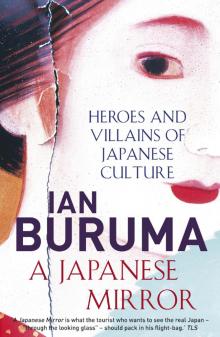 A Japanese Mirror
A Japanese Mirror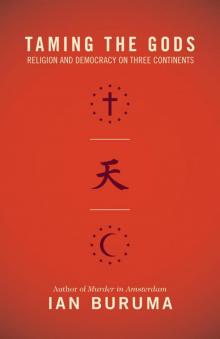 Taming the Gods
Taming the Gods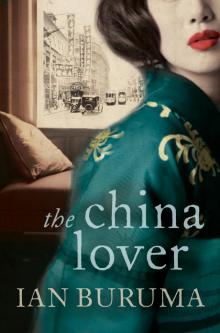 The China Lover
The China Lover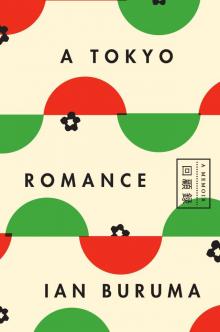 A Tokyo Romance
A Tokyo Romance Theater of Cruelty
Theater of Cruelty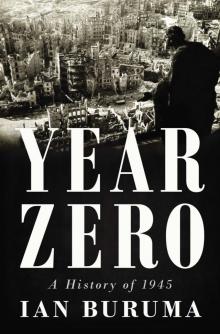 Year Zero
Year Zero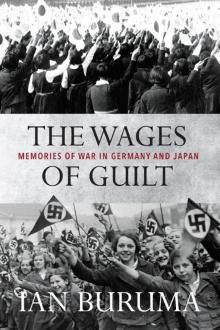 The Wages of Guilt
The Wages of Guilt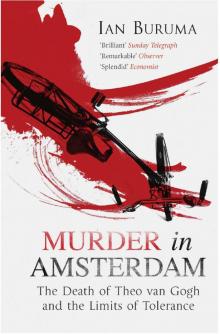 Murder in Amsterdam
Murder in Amsterdam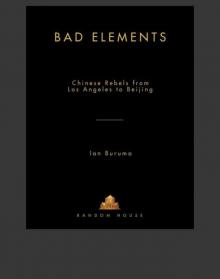 Bad Elements
Bad Elements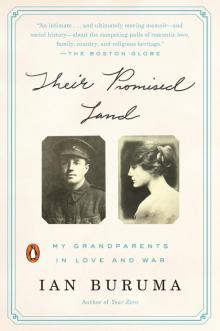 Their Promised Land
Their Promised Land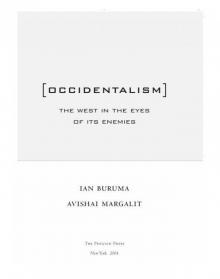 Occidentalism
Occidentalism Anglomania
Anglomania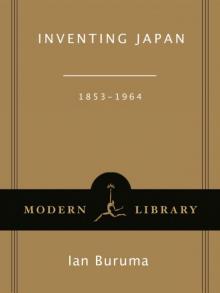 Inventing Japan: 1853-1964 (Modern Library Chronicles)
Inventing Japan: 1853-1964 (Modern Library Chronicles)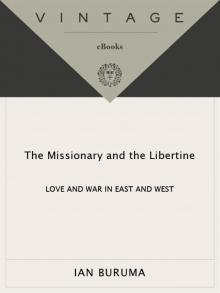 The Missionary and the Libertine
The Missionary and the Libertine